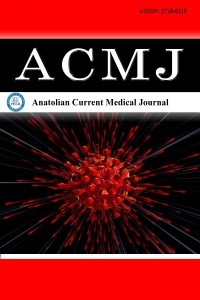1.
Manns M, Lohse AW, Vergani D. Autoimmune hepatitis - Update2015. Journal of Hepatology 2015; 62: 100- 11.
2.
Waldenstrom J. Liver, blood proteins and food proteins. DTSH ZVerdau Stoffwechselkr 1952; 12: 113- 21.
3.
Mackay JR, Taft LI, Crowling DC. Lupoid hepatitis. Lancet 1956;271: 1323- 6.
4.
Kirk AP, Jain S, Pocock S, Thomas HC, Sherlock S. Late resultsof the Royal Free Hospital prospective controlled trial ofprednisolone therapy in hepatitis B surface antigen negativechronic active hepatitis. GUT 1980; 21: 78- 63.
5.
Muratori P, Granito A, Quarneti C, et al. Autoimmune hepatitisin Italy: the Bologna experience. J Hepatol 2009; 50: 1210- 8.
6.
Liberal R, Longhi ms, Mieli-Vergani G, Vergani D. Pathogenesisof autoimmune hepatitis. Best Pract Res Clin Gastroenterol 2011;25: 653- 64.
7.
Donaldson PT. Genetics of liver diease: immunogenetics anddisease pathogenesis. Gut 2004; 53: 599- 608.
8.
Alvarez F, Berg PA, Bianchi L, et al. International AutoimmuneHepatitis Group Report: review of criteria for diagnosis ofautoimmune hepatitis. J Hepatol 1999; 31: 929- 38.
9.
Ma Y, Bogdanos DP, Hussain MJ, et al. Poly-clonal T-cellresponce to cytochrome P45OID6 are associated with diseaseactivity in autoimmune hepatitis type2. Gastroenterology 2006;130: 868- 82.
10.
Mack CL, Adams D, Assis DN, et al. Diagnosis and managementof autoimmune hepatitis in adults and children: 2019 practiceguidance and guidelines from the American Association for theStudy of Liver Diseases. Hepatology 2020; 72: 671- 722.
11.
Kim BH, Choi HY, Ki M, Kim KA, Jang ES, Jeong SH. Populationbased prevalence, incidence, and disease burden of autoimmunehepatitis in South Korea. PLoS One 2017; 12: e0182391.
12.
Takahashi A, Arinaga-Hino T, Ohira H, et al. Autoimmunehepatitis in Japan: trends in a nationwide survey. J Gastroenterol2017; 52: 631- 40.
13.
Tanaka A, Mori M, Matsumoto K, Ohira H, Tazuma S, TakikawaH. Increase trend in the prevalence and male-to-female ratio ofprimary biliary cholangitis, autoimmune hepatitis, and primarysclerosing cholangitis in Japan. Hepatol Res 2019; 49: 881- 9.
14.
Lee YM, Teo EK, Ng TM, Khor C, Fock KM. Autoimmunehepatitis in Singapore: a rare syndrome affecting middle-agedwomen. J Gastroenterol Hepatol 2001; 16: 1384- 9.
15.
Hurlburt KJ, McMahon BJ, Deubner H, Hsu-Trawinski B,Williams JL, Kowdley KV. Prevalence of autoimmune liverdisease in Alaska natives. Am J Gastroenterol 2002; 97: 2402- 7.
16.
Werner M, Prytz H, Ohlsson B, et al. Epidemiology and the initialpresentation of autoimmune hepatitis in Sweden: a nationwidestudy. Scand J Gastroenterol 2008; 43: 1232- 40.
17.
Gerenli N, Çeltik Ç. Mode of presentation and association ofautoimmune diseases in children with autoimmune hepatitis.Genel Tıp Derg 2022: 32: 95- 101.
18.
Gölçe S, Durmaz Ö, Çeltik Ç et al. Atipik Celiac Hastası ve eşlikeden otoimmun hepatit. Balkan Med J 2009: 3: 273- 276.
19.
Gencdal G, Meral C, Azarsız E, et al. Prevalence of coeliac diseasein autoimmune liver disease and priamry biliary cholangitis.Çağdaş Tıp Derg 2018: 8: 295- 8.
20.
Agmon-Levin N, Damoiseaux J, Kallenberg C, et al. Internationalrecommendations for the assessment of autoantibodies to cellularantigens referred to as anti-nuclear antibodies. Ann Rheum Dis2014; 73: 17-23.
21.
Damoiseaux J, Mühlen C, Torre I, et al. International consensuson ANA patterns (ICAP): the bumpy road towards a consensuson reporting ANA results. Autoimmune Highlights 2016; 7: 1- 8.
22.
Solomon DH, Kavanaugh AJ, Schur PH. Evidence-basedguidelines for the use of immunologic tests: antinuclear antibodytesting. Arthritis Rheu. 2002; 47: 434- 44.
23.
Chan E.K.L., Damoiseaux J, de Melo Cruvinel, et al. Report onthe second International Consensus on ANA Pattern (ICAP)workshop in Dresden 2015. Lupus 2016; 25: 797- 804.
24.
Meroni PL, Schur PH. ANA screening: an old test with newrecommendations. Ann Rheum Dis 2010; 69: 1420- 2.

